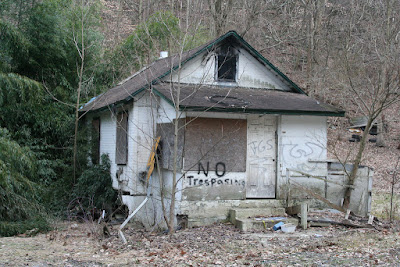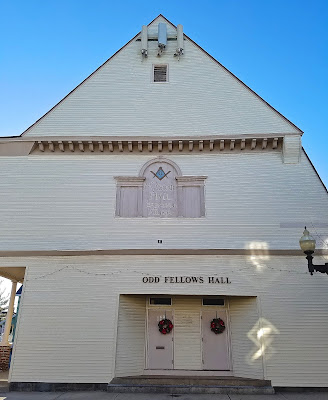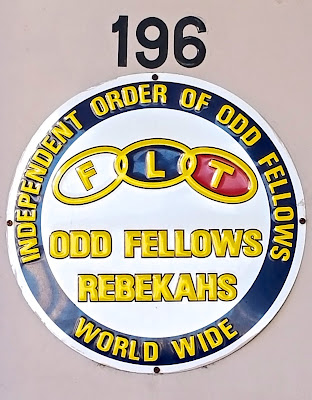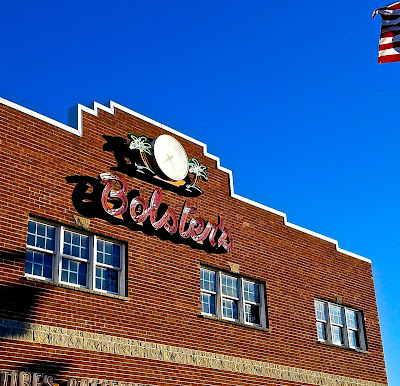From Dave Brigham:
Damn, Waltham, you ain't got no end!
This is the third and final installment of my review of the backside of Waltham, Mass. (see January 5, 2017, "Brigham in Waltham, Part II," and November 9, 2016, "Brigham in Waltham, Part I").
I've written plenty of times about single features of the former mill city, and surely will again. Because I live in the town next to Waltham, and pass through several times a week, I figured I'd gather as many photos and do as much research as I could on the things that interest me. But there's so much!
I thought I was done with this post, but then I thought, "Hey, why don't I give a quick look at the old Metropolitan Parkway site, and the conservation area not too far away on Trapelo Road?
That resulted in many great finds, so that's where I'll start. I'll let you know upfront: there are LOTS of pictures in this post.
I drive by the Metropolitan Parkway every weekday, on the way home from my son's school in Sudbury. The road now leads to an apartment complex, but once was the way in and out of Metropolitan State Hospital, a mental hospital built in 1927 and closed in 1992. I did some mountain biking in the area in the mid-'90s, when most, if not all, of the buildings were still standing. I was dumbfounded and fascinated by the abandonment of so many identical brick structures, but didn't own a camera at the time and wasn't as much into the backside of the world then as I've become in more recent years.
To read about Met State and see some photos of the site, check out this Opacity post. Be sure to scroll to the bottom of the post and click on the links for additional photos, which document both inside and out.
After parking my car, I walked along a path with a stone wall on one side and overgrown brush on the other, and before long I was staring at this building.

I've featured this building before on the blog (see August 23, 2010, "You Don't Have to Be Crazy to Live Here, But It Helps," the most insensitive headline I've ever written....). It was the administration building for the hospital, and sits just steps away from an apartment complex. I figured after six years this place would have been gone.




I have no idea why it hasn't been torn down, although it probably has something to do with asbestos and money. I don't know if there is a plan to demolish it.
As I was working on the research for Met State after taking these photos, I realized that I wasn't quite done with this final installment. You see, I discovered that not too far away from this building sits the cemetery that was used jointly by Met State and the nearby Fernald School. So I had to go back....

Just steps from the parking lot abutting the old admin building, I found this site. It stands just off a side path on the way to the main trail toward the cemetery. These steps don't seem to have been part of the old hospital grounds. There are other older features in this area; not sure what their stories are.
The cemetery features approximately 310 burials from 1947 to 1979, per the sign at the front of the graveyard. The site is split between Protestant and Catholic burials.


In the middle of the cemetery is this altar/shrine.

I found just one grave with a name on it.

After reflecting on the sorrow so many families must have felt knowing that their loved ones not only died at Met State but also were buried in such a way that nobody would know who they were, I set to wandering. I found some remnants of the old hospital's infrastructure.


I also stumbled across this:

This sofa bed must have been pulled out of one of the old hospital buildings. This whole area has a lot of paths, some of which are obviously frequented by mountain bikers. I suppose those who hang out in this area might have chilled on this couch at one point. I didn't see evidence of partying in the woods, but I'm sure it goes down.
With so many paths to choose from, I selected one that I knew would take me toward the site of the former Gaebler Children's Center, a facility that once stood on the other side of a hill from Met State. I direct you again to my August 23, 2010, post "You Don't Have to Be Crazy to Live Here, But It Helps," which is about both the Met State admin building and the former psychiatric institution for adolescents. Read the comments under the post; they are heartbreaking.
There are no more buildings on the Gaebler site, which may get developed at some point. I did find these old wagons, which may have been used for hay rides.

I then made my way up the hill toward the water tower, which I recalled from my mountain biking days.
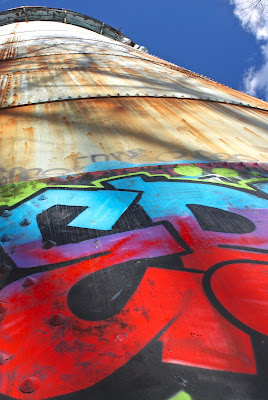
Finally, on my way back to the car, I stumbled across what appears to be an old chimney or outdoor cooking area, near the stone steps I'd seen on my way in.

This area of Waltham was once quite different. Rural and remote but not too far from Boston, the sites along Trapelo Road -- Met State, Gaebler Children's Center and the Fernald School, which I mentioned in part two of this series -- housed the mentally ill and other children and adults who society deemed unfit to live in their own communities. Now these sites have been commercially developed or turned into conservation land.
A little further west along Trapelo Road once stood Middlesex County Hospital, which operated from the 1930's to 2001. This site, too, was developed into condominiums. I didn't get a chance to check out that area before the hospital was torn down, but I recently explored a great wooded area just down the hill that was an unexpected suburbex goldmine.
James Falzone Park is a soccer field with a secret. After driving by this recreation area dozens of times, I realized there was a path leading into a large wooded area that surrounds this place on Trapelo Road. Research ahead of time yielded no clues as to what lay in this conservation area, but I had a hunch. That suspicion paid off bigly, as Donald Trump would say.


If an old pump house and yet another stone wall were all I found in the Falzone conservation area, I would've considered this little jaunt a success. A mild success, but still something worth doing. But then I saw this.
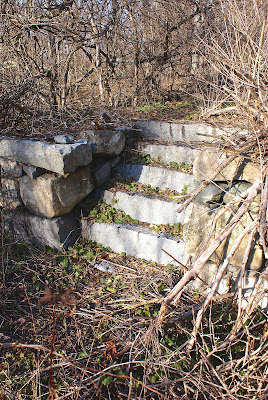
God that's a beautiful site, isn't it? While many people walk past these steps and wall and think little or nothing of them, this is the kind of ruin that sets my heart racing. I have so many questions: How old is this ruin? What did the house look like? Was it a farm house? Who lived here? How long has this place been abandoned?
The front yard of what I'm assuming was a farm house is now a soccer field. A few steps west down the path is another remnant.

There was a community of sorts here. There may be more evidence of homes and other buildings on this section of land on the Waltham/Lexington line. I plan to get back and explore some more.
While nobody lives in the houses I stumbled across, I did find evidence that people are living or at least hanging out here.

The remainder of this last installment will focus on ghost signs, a mural, some old commercial properties and a cool map.

This great map is located at the corner of Harvard and Main streets, on the outside of the former Waltham Super Market, which is now Hannaford Supermarket. Landmarks on the map are Waltham City Hall (c. 1926), Waltham Super Market, Waltham Hospital (c. 1887), a sanatorium (which must be Met State), roadways, rivers and ponds, wooded areas (including a Girl Scout camp that still exists), Brandeis University (c. 1948) and the Boys Club of America (c. 1937).
The artist is the late Leon Nigrosh, who grew up close to Waltham, in Cambridge and Belmont. Nigrosh published ceramics textbooks as well as art reviews for numerous publications.

Located a short distance from the Hannaford, Bubbles Laundromat has replaced its sign since I snapped this picture.

Quick Stop Variety is located on Main Street, not too far from Hannaford, in a cool old building that also houses The Common Cafe.

Further east on Main Street, on the corner of Newton Street, sits the shuttered A to Z Auto Service station, next to an empty lot where Stephen's Liquors once stood. This corner has been neglected for quite some time now but I assume something will get developed here before too long.

Located on the back wall of Michael J's Pub ("Waltham's Best Dive Bar"), this Coca-Cola ghost sign may at one time have been larger. I'm happy the building's owner kept it. Side note: I once drove past this bar and laughed my ass off at the sandwich board sign out front that read, "Soup of the Day -- whiskey!" I haven't seen the sign since, so perhaps the city told Michael J's to take it down.
For the final segment, I move on to Moody Street. Known in recent years for its wide variety of restaurants, Moody Street was once home to department stores, shoe stores, bakeries, hardware stores and some adult bookstores. For a look at the street's past, check out this Brand New Watch blog post.

The sign for Amelia Upholstery Shop caught my eye because that's my daughter's name. I then spotted the faded sign for Spencer Shoes, which is name-checked in the Brand New Watch blog post. Spencer is no longer open, and I don't believe the upholstery shop is either, since the longtime owner, Joseph Amelia, died last year.

I also spied the name "Amelia" on this building on Moody Street. A little research online brought this article to light. This building is owned by Ralph Amelia, brother of the late Joseph. This building once housed a beauty school upstairs, but now comprises seven apartments.
When walking through a parking lot on the backside of Moody Street, I hardly expected to find this amazing painting along the driveway back out to the shopping and restaurant area.

This girl is just one of the beautiful faces depicted by artists Caleb Neelon and Katie Yamasaki. For more on the mural, which was completed in September 2011, see this Brand New Watch article.
See, not everything on the backside is rusty and falling apart.
Along another side street I found this ghost sign for a fountain shop. You can make out part of the Coca-Cola logo.

Finally, the backside of a building on Felton Street, which is just off Moody.

A post-and-beam warehouse/industrial space, 22 Felton Street was home way back when to J. Cushing Company, a grain distributor. You can see the letters "AIN" up there.
Well, that's it for now. I'm sure to post more about Waltham in the future, but this should hold you over for now.


